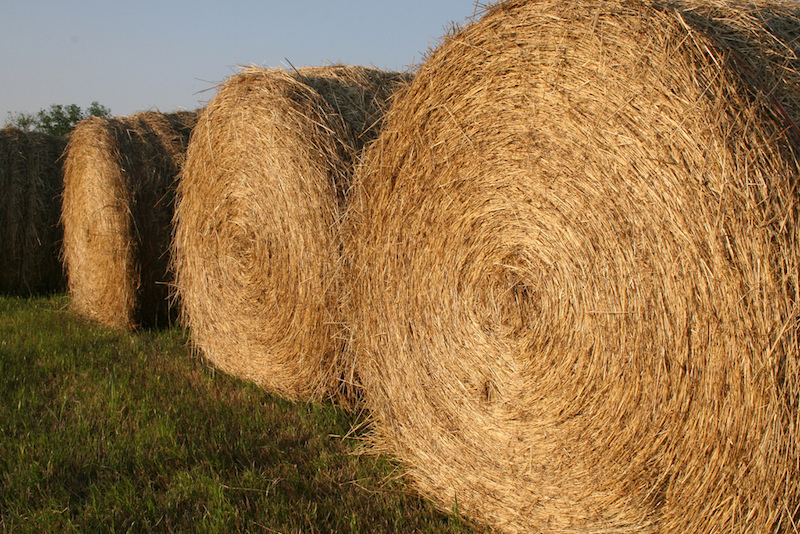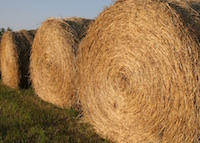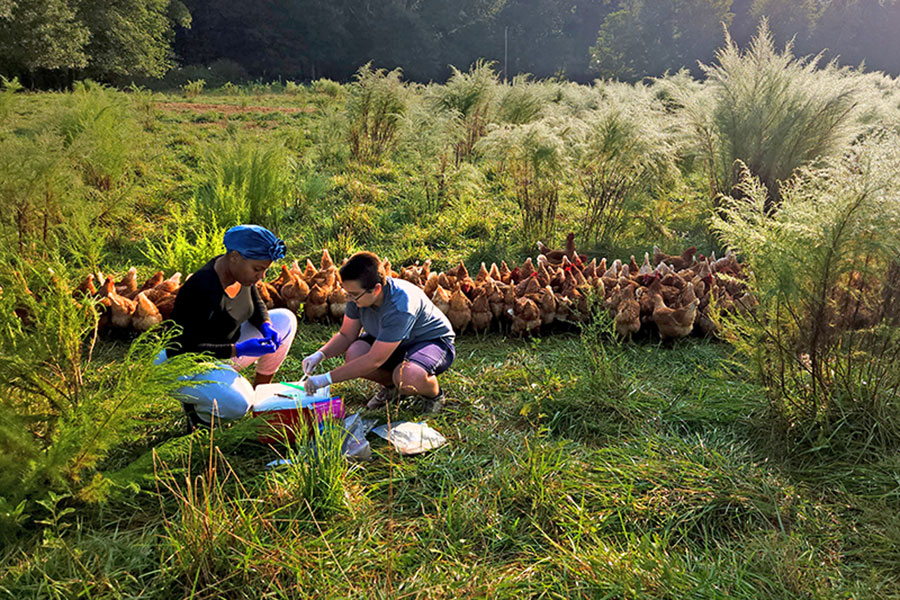With more than 328 entries in this year’s Southeastern Hay Contest (SEHC), competition was fierce among farms that pride themselves on fine hay.
Despite the crowded field, 13 Georgia farms placed in the competition’s seven categories, and two Georgia farms won their categories outright. Oak Ridge Ranch in Dahlonega, Georgia, won in the cool-season perennial grass hay category, and Jeff Bacon of Dudley, Georgia, won the warm-season perennial grass hay category. Winners were announced Tuesday, Oct. 17, at the Sunbelt Agricultural Expo in Moultrie, Georgia.
For the past 13 years, the contest, presented by Massey Ferguson, has recognized farmers who make the extra effort to produce quality, high-nutrition hay and baleage. The Cooperative Extension programs in Alabama, Florida, Georgia and South Carolina organize the contest each year and sponsors — like Massey Ferguson — offer prizes.
The contest is broken down into seven categories: warm-season perennial grass hay (bermudagrass, bahiagrass), alfalfa hay, perennial peanut hay, cool-season perennial grass hay (tall fescue, orchardgrass), mixed annual or other grass hay, grass baleage and legume baleage.
In each of the categories, the highest three entries in terms of relative forage quality (RFQ) received cash prizes. First-place winners received $125, second-place winners received $75 and third-place winners received $50.
The farm that won top honors in terms of highest overall RFQ also received its choice of the use of a new Massey Ferguson DM Series disc mower or RK Series rotary rake for the 2017 hay production season plus $1,000. This year, the overall high RFQ was 269, attributed to the extremely high-quality alfalfa produced at Seldom Rest Farm in Pulaski, Tennessee.
Weather is always a major factor when attempting to produce quality forage. This year, wet conditions early and dry conditions late in the growing season proved to be a major limitation for many producers. Drought stress late in the season increased the incidence of high nitrate levels in the forage in 2017, and 11.5 percent of the samples submitted to the contest were disqualified because nitrates were greater than 5,000 parts per million (ppm).
Although the average forage quality this year was very high, these weather challenges caused the average RFQ to be down slightly from previous years. Still, the winning entries were on par with or greater than record-winning values in the contest’s 13-year history. Good management can make a remarkable improvement in forage quality in both favorable and unfavorable weather conditions.
In the past, hay quality prediction equations were based on the fiber concentration of the hay crop. However, forage crops can have similar fiber content, but different digestibility. For instance, Tifton 85 bermudagrass often has a higher fiber concentration than other bermudagrass varieties, yet it is more digestible. This improved digestibility results in enhanced animal performance, but is not reflected using traditional forage testing methods.
The RFQ index was developed by the University of Florida and the University of Wisconsin to predict the fiber digestibility and animal intake of harvested crops. Currently, all forage sample results from the University of Georgia’s Feed and Environmental Water Lab in Athens, Georgia, contain an estimate of RFQ.
This value is a single, easy-to-interpret number that improves producer understanding of a forage’s nutritive quality and helps in establishing a fair market value for the product.
To learn more about how farmers can use RFQ to improve their forage stand or more about forage quality, please visit georgiaforages.caes.uga.edu.
The winners in each category include:
Warm-season perennial grass hay (sponsored by R.W. Griffin Industries), with 106 entries
- First place, Jeff Bacon of Dudley, Georgia
- Second place, Double K Farm of Oxford, Georgia
- Third place, Chase Hassey of Milner, Georgia
Alfalfa hay (sponsored by America’s Alfalfa), with 19 entries
- First place, Seldom Rest Farm of Pulaski, Tennessee
- Second place, Brent Stegall Farms of Peachland, North Carolina
- Third place, Bohlen Farms of Madison, Georgia
Perennial peanut hay (sponsored by the Perennial Peanut Producers Association), with 13 entries
- First place, Robert Harrison of Quincy, Florida
- Second place, Windy Hill Ranch LLC of DeFuniak Springs, Florida
- Third place, Farrell Roberts of Tifton, Georgia
Cool-season perennial grass hay (sponsored by Inland Tarp and Liner), with 20 entries
- First place, Oak Ridge Ranch LLC of Dahlonega, Georgia
- Second place, J & B Farms, Jim Raptist of Lyerly, Georgia
- Third place, Brian Hart of LaFayette, Georgia
Mixed annual or other hay (sponsored by Athens Seed Company), with 69 entries
- First place, Yon Family Farms of Ridge Spring, South Carolina
- Second place, Scott McRae of Alma, Georgia
- Tied for third place, Wayne Tankersley of Madison, Georgia
- Tied for third place, Mike Ivy of Bostwick, Georgia
Grass baleage (sponsored by Georgia Twine), with 90 entries
- First place, Yon Family Farms of Ridge Spring, South Carolina
- Second place, Rolling Rock Farm of Lexington, Georgia
- Third place, South Family of Thomaston, Georgia
Legume baleage (sponsored by Southeast AgriSeeds), with 11 entries
- First place, Windy Hill Ranch LLC of DeFuniak Springs, Florida
- Second place, Yon Family Farms of Ridge Spring, South Carolina
- Third place, Smiley B. Farms of Graceville, Florida
(The organizers of the Southeastern Hay Contest contributed to this article.)








